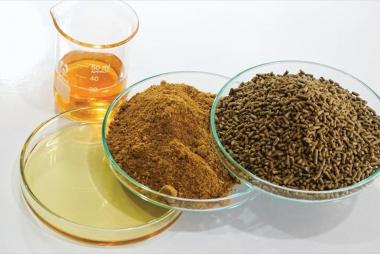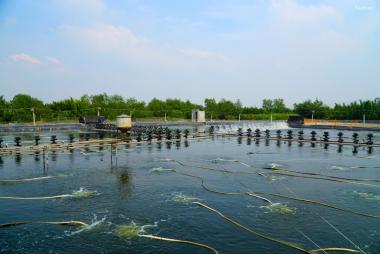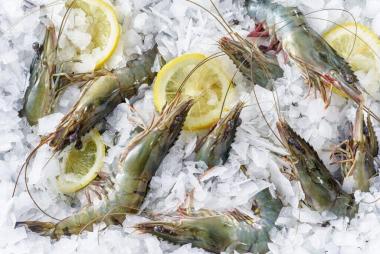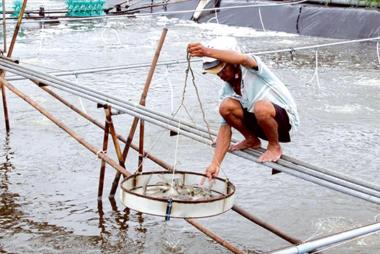In the first nine months of 2025, Vietnam’s shrimp exports exceeded USD 3.4 billion, up 22% year-on-year – the strongest growth pace in the last three years. The rebound has been driven by improving demand in key markets such as China, the U.S., the EU and the CPTPP bloc, together with exporters’ flexibility in adjusting product structure and market mix, despite ongoing tariff pressures from the U.S.

Product structure: Whiteleg shrimp leads, marine shrimp surges
Whiteleg shrimp remains the main growth engine, bringing in over USD 2.2 billion and accounting for about 65% of total shrimp export value, an increase of 9% compared with the same period last year. Within this segment, processed whiteleg shrimp (HS16) contributed nearly USD 1 billion, up 12%, reflecting a clear shift toward higher value-added products.
Black tiger shrimp reached around USD 343 million, a modest rise of 2%, supported by stable demand from Japan and China for large-sized and eco-labeled products.
The most impressive performance came from other shrimp products – including lobster and slipper lobster – which soared by 91% to nearly USD 870 million. This sharp increase underscores both portfolio diversification and the growing appetite for premium species in China, the EU and other high-income markets.
Market highlights: China & Hong Kong at the forefront
China & Hong Kong remain the standout destinations, with shrimp imports from Vietnam reaching USD 966 million, up 65%, and accounting for almost 30% of Vietnam’s total shrimp exports. Demand is particularly strong for live shrimp, premium lobster and high-end processed products. However, rising inventory levels in China suggest that this market may enter a period of adjustment in Q4/2025.
The United States, Vietnam’s third-largest shrimp buyer, recorded imports worth USD 587 million, up 4%. Although U.S. consumption has improved, the industry is under pressure from new anti-dumping duties expected to be finalized by year-end. As a result, many Vietnamese exporters are more cautious with long-term contracts to the U.S. and are partially shifting volumes to the EU and other Asian markets to spread risk.
The CPTPP bloc absorbed nearly USD 941 million of Vietnamese shrimp, a robust 34% increase. Within this group, Japan leads with USD 426 million, accounting for about 12% of Vietnam’s total shrimp export value. Japanese buyers continue to favor convenient, processed products with strong sustainability credentials.
In the EU, shrimp exports climbed 21% to USD 434 million. Major destinations such as Germany, Belgium and the Netherlands posted gains of 6–28%. Growing demand for ASC-certified, organic and low-carbon products is helping Vietnamese shrimp secure and expand its position in premium retail chains across Europe.
Elsewhere in Asia, exports to South Korea and Taiwan recorded healthy double-digit growth, up 13% and 36%, respectively. Meanwhile, shipments to Russia and Canada have shown signs of plateauing after previous periods of strong growth.
Across major shrimp farming regions in Vietnam, raw shrimp prices have remained relatively stable thanks to strong year-end demand in both domestic and export channels, while off-season conditions keep supply somewhat tight.
Q4/2025: Growth likely to cool, but opportunities remain
Looking ahead to Q4/2025, Vietnam’s shrimp exports are expected to moderate compared with the strong performance of the first nine months. The main drag comes from uncertainty and trade risks in the U.S. market, particularly around anti-dumping measures.
That said, there are still pockets of opportunity. Indonesia’s more restricted access to the U.S. market opens a short-term window for Vietnamese shrimp to gain additional market share. At the same time, Ecuador’s heavy focus on supplying China reduces competitive pressure on Vietnamese shrimp in Japan, the EU and South Korea, creating room for Vietnam to maintain or even secure premium pricing through the rest of Q4.
Outlook for 2026: Competing on “green” and value-added
Moving into 2026, competitive pressures in global shrimp markets are expected to intensify as major producers adjust their strategies, optimize costs and re-target key destinations.
For Vietnam, sustaining the current momentum will depend largely on the ability to:
-
Accelerate green transformation across farming, harvesting and processing;
-
Digitize supply chains, enhancing transparency and traceability from farm to fork;
-
Invest in value-added innovation, including ready-to-cook and ready-to-eat products that meet rising standards for convenience, sustainability and food safety.
By combining sustainable farming practices, digital management and high-value product development, Vietnam can strengthen its competitive edge and reinforce its position as a reliable supplier in the global shrimp market in the years ahead.
Translation from VIBO news. Author of Vietnamese article: Adapted from VASEP (seafood.vasep.com.vn).















